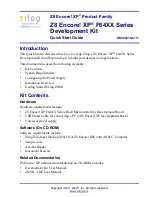
GB
3
Warning – before installation, make sure that
there are no pieces of polystyrene or the like
inside the “Max Motor”, if so remove them.
Proceed with installation as follows:
01. (Fig. 4)
Insert the “Max Controller” [
B
] into the
tubular section [
A
], aligning the two holes
a1
and
b1
and then pushing in the head as far as it will
go. Secure the two parts with the supplied (HI-
LO, 4 x 8 UNI 9707, tip-less) screw into the hole
a1
.
Warning
– apart from being a source of dan-
ger, using the incorrect screw could also perma-
nently damage the head.
02. (Fig. 5)
Insert the limit switch crown [
C
] on to the
tubular section [
A
] and slide it onto the bush of
the limit switch [
D
], aligning points
c1
and
d1
so
that the crown is blocked in position.
03. (Fig. 6)
Engage the driving wheel [
E
] on the driv-
ing shaft self-locking mechanism, aligning the
related arrows (
Note:
to remove the wheel, press
the button “Push” and remove it). Measure and
note the distance
C-E
.
04. (Fig. 7)
Introduce the tubular motor into the roller
as far as the limit switch crown [
C
]. Position the
roller in the previously read measurement
C-E
and screw in self-tapping screw of at least 10
mm in point
e1
. This operation secures the driv-
ing wheel [
E
] to the roller to avoid possible slip-
page or movement of the motor.
05
. Then fix the supporting bracket to the wall and
connect the end of the “Max Controller”.
Warning
– the bracket should be secured at an
angle that allows easy access to the limit switch
adjustment screw.
NOTE –
during the installation and adjustment
operations, the motor can be controlled by the
“TTU”
unit
(Fig. 8)
until the final electrical connec-
tions have been made
.
4 - ELECTRICAL CONNECTIONS
Warning
– A single-pole mains disconnection device
with a contact gap of at least 3 mm must be used
when making the electrical connections (e.g.: discon-
necting switch, plug and socket, etc.). The connec-
tion devices are not supplied with the product.
Warning
– The connections indicated in this manual
must be fully respected; if in doubt, do not try to
experiment but consult the relevant technical specifi-
cations which are also available on the web site
www.niceforyou.com.
Warning- Incorrect connections could cause fail-
ures and hazardous situations.
Refer to the electrical layout in
Fig. 9
for the con-
nections. The tubular motor power supply cable
has 4 wires:
- Brown:
= Up electrical phase;
- Black:
= Down electrical phase;
- Blue:
= Common (normally connected
to the Neutral)
- Yellow-Green:
= Ground (protective
electrical bonding).
Once the connections have been made the up and
down movement of the roller must be verified,
because at this point the movements depend on the
side in which the motor has been installed in the roller.
If necessary the direction of each movement can be
modified by inverting the Brown and Black wires (the
two electrical phases of the motor are completely
interchangeable in as much that each rotates in a
specific direction).
5 - LIMIT SWITCH ADJUSTMENT
The “Max Controller” is equipped with an electro-
mechanical type limit switch system that cuts the
power supply when the roller reaches the opening
and closing limits. The two positions can be easily
adjusted and adapted by turning the two adjustment
screws that control the “Up” (raised stop) and the
“Down” (lowered stop) movements.
NOTE
: the limits
of the limit switches are factory set at approximately
3 turns of the shaft.
Depending on the position of the roller after installa-
tion (see figure below), perform the three adjustments
A, B,
and
C
for each case, in the order indicated by
the following layouts:
––– Adjustment A –––
a1.
Control the motor so that it
lifts
the shutter
or awning (
position 0
) and wait for the motor to
stop through the activation of the limit switch as
currently regulated; this normally happens before
the shutter reaches the desired
position 0
.
•
While this is being performed, check in which direc-
tion the roller is turning and note the screw that has
the arrow pointing in the same direction (
Fig. 10
).
Warning
– if the motor continues to turn after it
has reached the desired
position 0
, stop it
immediately and reverse the direction allowing
the shutter to lower slightly. Then give the adjust-
ment screw (that noted in point
a1
) a few turns
towards the
–
sign. Then start the procedure
again from point
a1.
a2.
Then turn the adjustment screw (noted in point
a1
) a little at a time towards the
+
sign so that the
shutter rises and reaches the desired stop posi-
tion. Turn on the motor (lifting) during adjustment
so that each time the adjustment screw is turned
the shutter stops in the new position.
––– Adjustment B –––
Select the adjustment screw that
was not used
in the previous manoeuvre
and give it a few
turns towards the
–
.
0
1
A
B
C
C
B
A
Manuale MAX_CONTROLLER 29-08-2005 17:07 Pagina 3




































